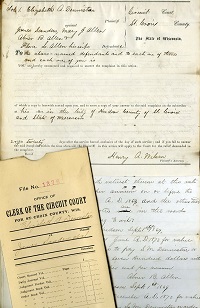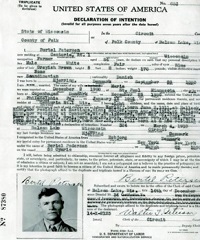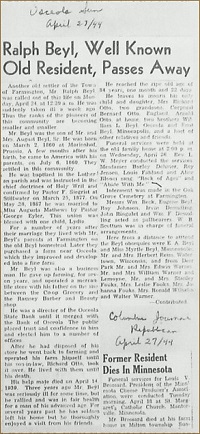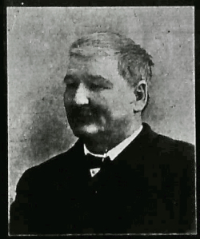UNIVERSITY OF WISCONSIN River Falls
University Archives and Area Research Center
Archives Biographical Index FAQs
How to request a record.
Each record look up is $5.00. When you locate a record in the index, click the View button on the right. Copy the Record ID number, and Entity (name of person), and send us an email archives@uwrf.edu requesting a copy. We will follow up with payment options.
What's in the index?
Check back often because we will be continually adding new entries. The search page has a counter that will give you up-to-date statistics on the number of records in the database.
The entries currently include:
- Birth, death, and marriage notices in the local newspapers, 1853-1910. (incomplete)
- Burnett County Circuit Court Civil Case Files, 1888-1971
- Pierce County Circuit Court Criminal and Civil Case Files, 1866-1930.
- St. Croix County Naturalization Records, 1850-1954. (incomplete)
- Pierce County Naturalization Records, 1852-1963. (incomplete)
You can learn more about each of these record collections by searching in our online repository.
A special thank you to members of the St. Croix Valley Genealogical Society who have been indexing the Pierce County court records for us!
Searching tips
This is a name index only.
Although you are searching both the Surname field and the Alternate Name field at one time, the results appear in their own columns. Results give you the Surnames as they appear on the record in one column and any Alternate spellings in another column. Also in that Alternate column are any maiden surnames, coming either from the record itself, or from another record. Finally, business names and government entities that appear in the court records also get listed in the Surnames column. Names added by us from another record will be in square brackets.
You do not need to know which column in the results the name will appear in, just enter any name in this box and it will search multiple fields for you. Notice that all Surnames will display alphabetically first, followed by anything in the Alternate field second.
The same thing applies to the Given name and to the Nickname fields. Both get searched together, but then display in separate columns. The Nickname column is slightly misleading in that we put the name as it appears on the record in the Given name field. If that name is just initials or is a nickname, and we know what the actual name was, the true name will appear in the Nickname field in square brackets.
The results list names from the Surname or Given name column first, and then the Alternate names columns second.

















